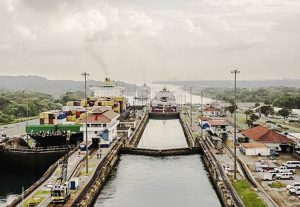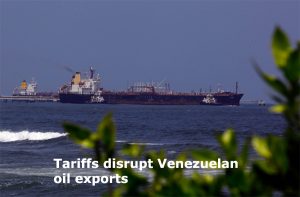
Alberto Araujo, Argus
QUITO
EnergiesNet.com 06 24 2022
Ecuador’s crude production has tumbled by 45pc to 275,921 b/d on 22 June from 499,005 on 12 June, a day before a national strike started in the South American country, according to energy regulator ARC.
The confederation of indigenous nationalities (Conaie) has led the protests, demanding that the government reduce already subsidized fuel prices and provide other benefits to farmers.
Protetors have invaded and vandalized at least 10 oil fields operated both by state-owned PetroEcuador and private-sector producers, the government said. The ministry of energy said today that 918 wells had to be shut in Sucumbios, Napo Orellana and Pastaza, provinces in the Amazonian region, because protesters had occupied or sabotaged the fields. PetroEcuador operates 781 of these wells and private producers operate 137 of them.
PetroEcuador’s chief executive Italo Cedeno announced on Wednesday night that the 360,000 b/d pipeline SOTE — the second-largest crude pipeline of the country operated by PetroEcuador— had to stop transporting crude because of a lack of the product. The fields where the operations have been affected the most are Sacha, Lago Agrio, Auca, Libertador, Coca Payamino–Yuralpa, Cuyabeno, Shushufindi and Indillana. There protesters blocked the roads, took over the operations of the wells and facilities and forced the technicians to turn off the equipment.
Cedeno added the wells that are still working could stop in the next four days since their pumps use energy provided by diesel thermoelectric plants, which are running out of fuel. PetroEcuador is struggling to supply diesel and gasoline in several provinces that only have reserves for five days.
The issues led PetroEcuador and the ministry of energy to declare force majeure on all contracts along the crude value chain earlier this week. The government estimates that the strike has cost $51mn so far to the energy sector alone.
Effects spread to power, mining
The state utility that owns over 90pc of generation plants and the national grid, Celec, said that 300 indigenous people took over the 500kV Tisaleo substation that transports power from Coca-Codo Sinclair, in the northeast, to Guayaquil, the principal port city. Protesters claimed to have cut the electricity to Guayaquil, but Guayaquil is being supplied from other hydroelectric plants in the south, such as Paute. Protesters are still in Tisaleo, and not allowing technicians to leave, Celec said.
The ministry of energy also reported the mining companies have lost $10mn over the strike because they cannot transport copper and gold to the ports to be exported.
The Ecuadorian government and Conaie announced they are willing to negotiate a possible end to the strike, with the Catholic church and other civil society organizations mediating.
argusmedia.com 06 23 2022












